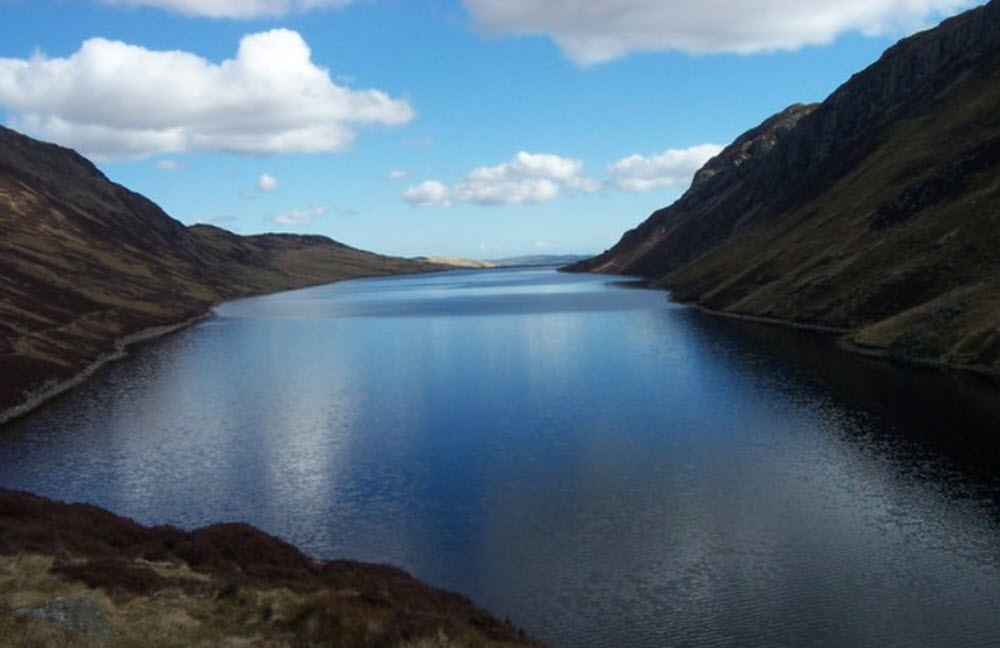Llyn Cowlyd is the deepest lake in North Wales. It is located in Snowdonia National Park at an altitude of 355 m above sea level.
From Trefriw, which is about 5 km east, you can reach Llyn Cowlyd. The major road ends at the gate about 1.6 km from the lake itself. From there, no private vehicles are allowed.
It is also possible to walk from Capel Curig, which is about 3 km from Llyn Cowlyd, or from the ridge Cefn Cyfarwydd, or from above from Dolgarrog. There is a good path to walk along the northwest shore around the lake.

The stream that flows from Llyn Cowlyd is called Afon Ddu. This flows into the river Conwy just south of the village of Dolgarrog. Water is supplied to the southwestern part of Llyn Cowlyd. It is also fed by water from Llyn Eigiau.
The lake is home to Artic Char, a relic from the ice age, originally taken from Llyn Peris, in Llanberis Pass, when that lake was drained during the construction of the Dinorwig Power Station.
Llyn Cowlyd is a narrow and long lake. It is about 3 km long and about 500 meters wide. It covers an area of 1.1 km2.
The average depth in the lake is 33 m, but the deepest is 70 meters. It is about 14 meters deeper than it naturally was. The water surface on the lake has been raised twice due to the construction of dams in the area.
Llyn Cowlyd is surrounded by steep hills.
Due to the weather conditions, the water in the lake often looks dark.
The first dam built by Llyn Cowlyd was completed in 1897.
It was 161 m and held over 318,000,000 liters of water.
At the northeast end of Llyn Cowlyd is a 14m high dam. It was completed in 1921 and officially inaugurated on September 20, 1922.
The stone that was needed for the construction of the dams came from a quarry nearby.
The construction workers who worked with the dam lived in temporary wooden barracks that were later converted into homes.
There are several suggestions as to where LlynCowlyd got its name from. Some state that the name Cowlyd comes from “Cawlwyd” or “Cawllwyd”. Caw, Lord or Chieftain of Cwm Cawllwyd is also mentioned. “Cwm Cawllwyd” could therefore be translated as The Cwm of Gray Caw.
Wild swimming has become popular to do in Llyn Cowlyd. It is cold water that suits it. the pebble beach at the north end is the best place to swim from. Wade through the shallows until you feel that the seabed falls off and the temperature gets a few notches colder.
Otherwise, a wetsuit is recommended if you are going to take a longer dip.
There is research that suggests that the name may come from a famous warrior, Caw, who is included in the Welsh tale Culhwch and Olwen. Caw’s son Celyn ap Caw had a watchtower, Tŵr Celyn, near the Copper Mountain, on Anglesey.